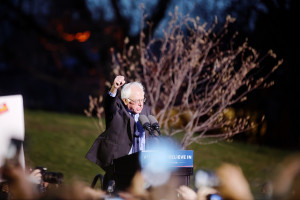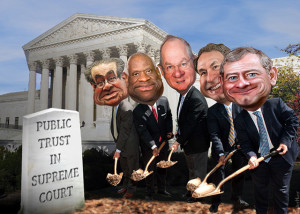
Photo of MAGABomber Cesar Sayoc with photoshopped slogan on sign.
Just days before the 2018 midterm elections, two incidents have pushed the Republican culture of hate and violence to the top of the political agenda. The first incident culminated on Friday, when right wing activist Cesar Sayoc was arrested for allegedly sending approximately 14 package bombs to prominent targets of Donald Trump and the Republicans, including former Secretary of State Hillary Clinton, former Vice President Joe Biden, Florida Congresswoman (and former Democratic National Committee Chair) Debbie Wasserman Schultz, and CNN. Sayoc’s van is covered in pro-Trump and anti-Democratic hate messages, including a picture of Hillary Clinton with gun cross-hairs over it. Sayoc was therefore dubbed the “MAGA Bomber.”
The second incident occurred Saturday morning, when a white man, yelling “all Jews must die!” opened fire with an AR-15 assault rifle at the Tree of Life Synogogue in Pittsburgh, PA, killing at least 11 worshippers and wounding several others, including police officers. This comes several days after a Fox Business channel host and other Republicans raised anti-Jewish conspiracy theories, such as the idea that the so-called “caravan” of migrants from Central America are dangerous people funded by Jewish billionaire George Soros. Likewise, Donald Trump tweeted on October 22 that the caravan included “unknown Middle Easterners,” a statement with which Vice President Mike Pence agreed. The Pittsburgh killer seemed to synthesize these ideas when he recently posted on his social media:
It’s the filthy EVIL jews Bringing the Filthy EVIL Muslims into the Country!!
This latest right wing violence (it appears to meet the definition of “terrorism,” which is essentially targeting civilians for violence for political purposes) is part of a long history coinciding with Republican hate and death rhetoric. For example, years of Republican anti-government propaganda, including after the 1993 siege in Waco, Texas, culminated in the 1995 bombing of the Murrah Federal Building on Oklahoma City on Waco’s second anniversary.











